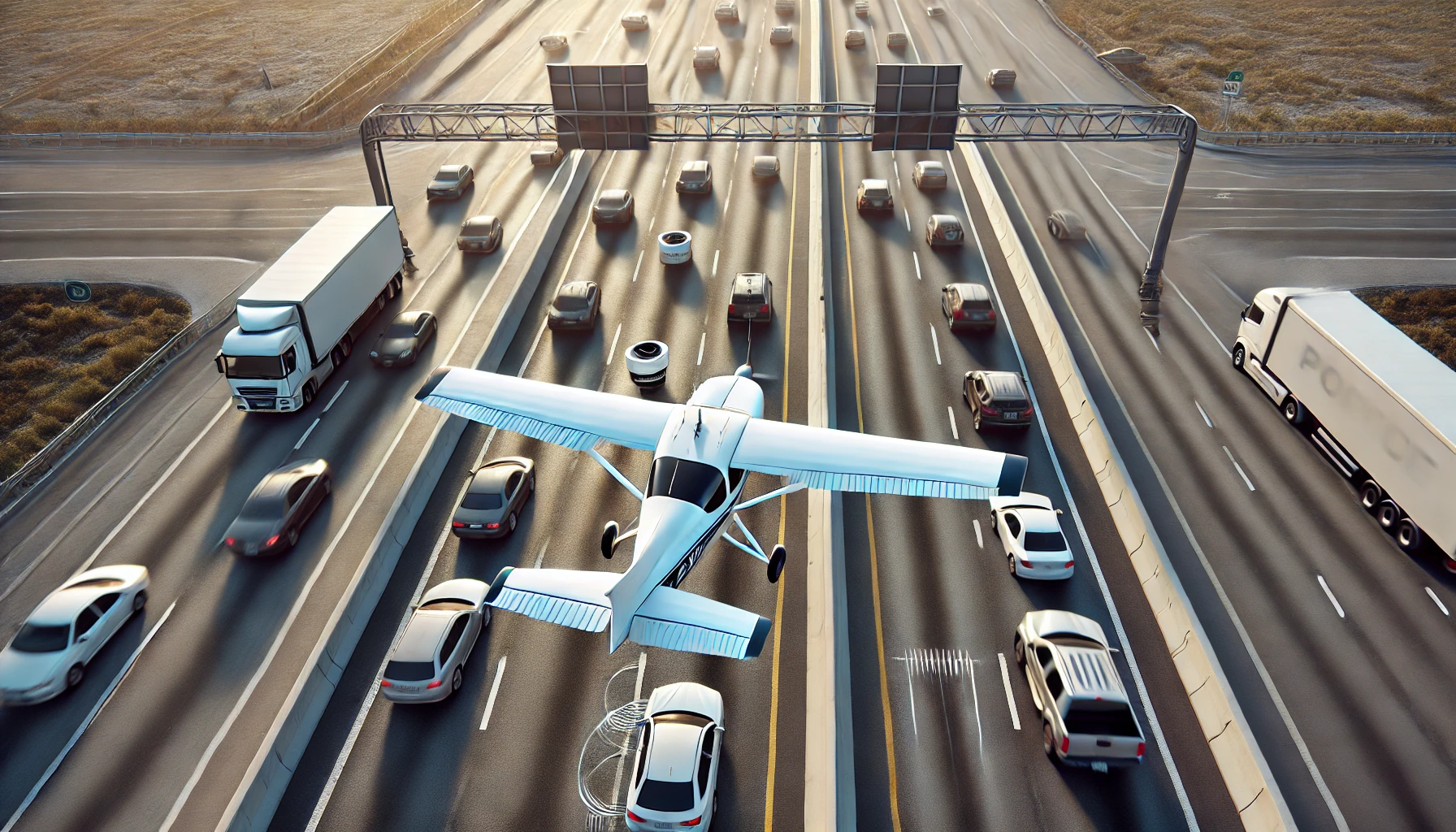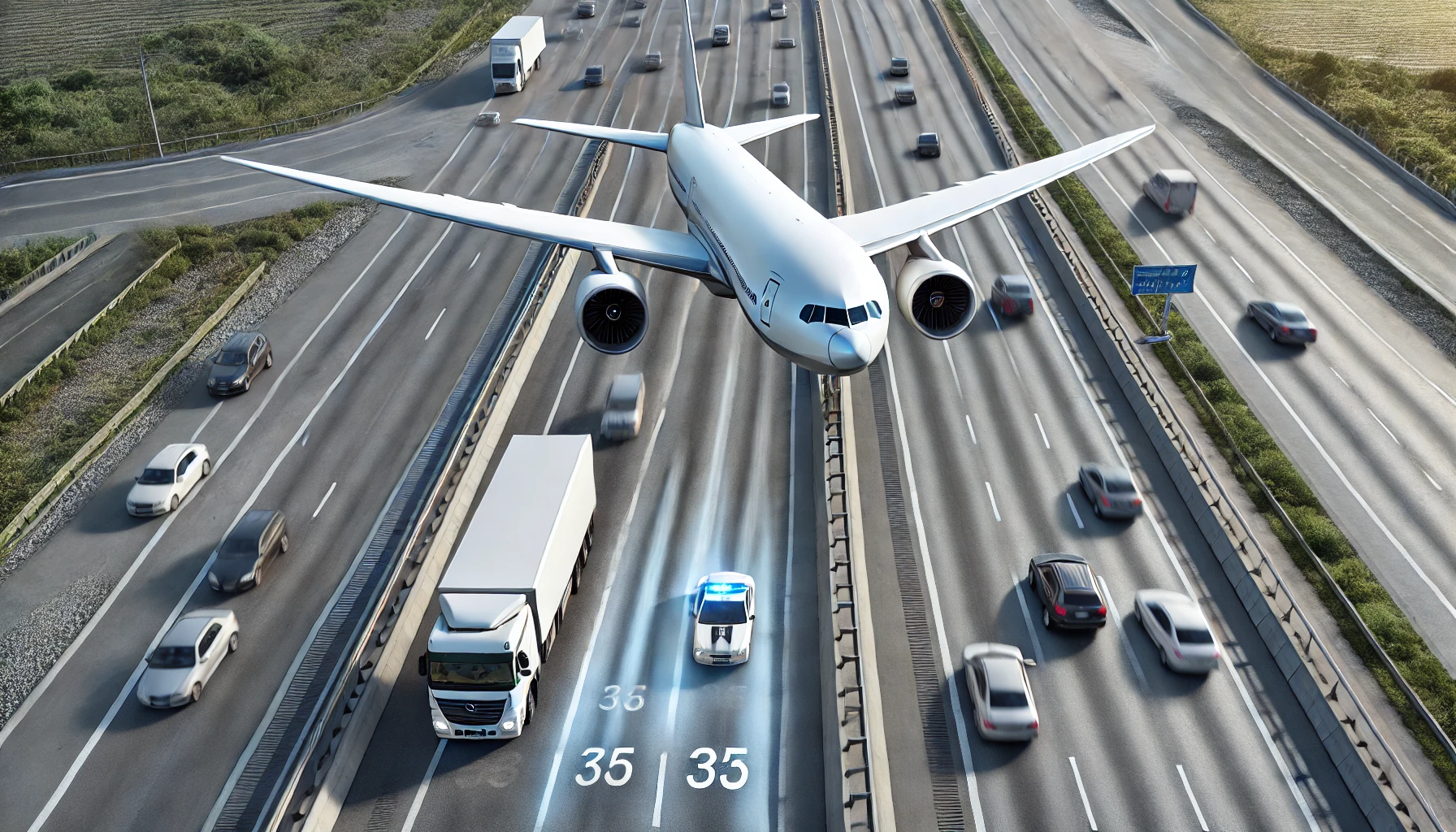Decoding Aircraft Speed Enforcement: The Sky’s Eye on the Road. Have you ever thought about how the police manage to keep our highways safe from hooligans operating vehicles at top speeds? There are various ways to supervise traffic, and some are more effective than others, but now enforcement is literally reaching new heights – in the sky!
Imagine sleek aircraft cruising above the road with modern technology capable of identifying speeders in the blink of an eye. In this blog post, we analyze the breathtaking world of aerial speed enforcement by its functionality, effectiveness in improving road safety, and what information drivers need to have regarding the attention from above.
So, fasten your seatbelts as we glide through the clouds all the way into the world of aviation-traffic control!
Introduction to Speed Enforcement by Aircraft
Now, imagine this: You’re smoothly driving on the highway, music at full volume, when suddenly a plane flies above you. That’s the moment when you would assume any airplane flying above is no different from the countless ones you see everyday; however, for some motorists, that aircraft serves the purpose of a hawk, enforcing speed limits from above.
From the enforcement of speed limits, this method of restraining motorists who are driving above speed limits by aircraft has caught the attention of several regions. But what does it actually mean by “speed enforced by aircraft?”
Does it really have more depth than what serves the eyes? This blog post is meant to bring you through many aspects of aerial speed enforcement covering how it works, the impact it has both advantages and disadvantages, its legal aspects, and some misconceptions as well. So, fasten your seatbelts as we dive into the analysis of this novel approach to speed enforcement we designed.
How does it work?
Speed enforcement by aircraft relies on precise technology and coordination. Specialized equipment is fitted in small planes or helicopters, and these are the vehicles usually chosen by the political or law enforcement institutions.
These aircraft monitor traffic from above and track the vehicles as they pass. Officers that are in the air talk to the ground officers via radio and that communication is very effective for real-life conversation because it enables timely action to be taken.
To measure speed, pilots use a method called clocking. They measure the time a particular vehicle takes to go between two marked points on the roadway. Those times are used with the distance to find out how fast the driver was going.
Once a speeding violation is confirmed, ground officers are deployed to stop the vehicle before it caps out. This approach guarantees that vehicles violating set speed boundaries are not ignored. Police monitoring from aircraft contributes another level of supervision towards ensuring proper traffic regulations are adhered to.
Aerial speed enforcement is both favorable and unfavorable.
Aerial speed enforcement does have certain advantages. The fact that it can scan a wide area from one position is one of the primary benefits. As such, law enforcement can observe traffic on major highways as well as rural roads.
In addition, aerial enforcement serves to discourage high speed. The fact that aircraft are enforcing the speed limits inspected on the roads is likely to make drivers obey the set limits.
Nevertheless, speed enforcement from aircraft comes with its own disadvantages. Policemen can, and some other entities do, complain that their privacy is encroached upon because motorists feel as though they are always being observed from above.
Cost is also a concern: the aircraft must be maintained and personnel have to be trained which costs a lot. These expenses might be better served in other areas of public safety.
Furthermore, there may be problems associated with the accuracy and reliability of measuring speed from an aircraft. Mistakes can result in excessive punishment where the individual is wrongly convicted, and arguments will surround tickets issued based on purported aerial intelligence.

Judicial Considerations
Concerning speed from a powered aircraft, the legal aspects are of utmost importance. Law enforcement agencies have to follow predetermined rules for the use of air surveillance.
Local and state regulations differ considerably in the use of an aircraft for traffic speed monitoring which is a legal quagmire that police officers have to be careful to avoid.
Besides, the information collected during these operations must be able to stand up to scrutiny in a court of law. Police officers, as a general rule, need to be properly trained in aviation and speed measurement procedures.
Also, this method of enforcement raises issues of privacy. The general public may not be comfortable with the idea of being constantly observed through the eyes of a monitoring device.
In addition, challenges can be raised in defense against charges based on tickets stemming from aerial observations. Some defendants might ask for proof or challenge the validity of speed assessments captured from above.
This conversation about legality continues leading how authorities manage the enforcement of speed limits by aircraft.
Typical Errors Concerning Ongoing Aerial Enforcement of Speed
There is a common misconception that speed enforced by an aircraft is focused solely on the apprehension of reckless drivers. But the reality is that it goes beyond simply penalizing those who transgress – it’s a proactive tactic to promote and ensure safer roadways.
However, another widespread misunderstanding is that these operations are unsystematic and unrestricted. In actual fact, there are specific procedures developed and approved for the use of aerial enforcement by law enforcement agencies. This is done in conjunction with officers on the ground, who actively monitor the situation to ensure that the system is operated in a just and equitable way.
It is also a common assumption that the detection equipment onboard the aircraft is flawless. While it is true that these systems work with a very high degree of effectiveness, they are prone to failure owing to several reasons, such as the effect of weather, or some fault in the equipment.
Finally, many people assume that this technique is applied only to highways and other main arteries. However, aerial surveillance can also take place within the city, which will be adjusted according to changing traffic conditions to promote safety on all routes.
Alternatives to Aerial Speed Enforcement
It is possible to find other options that do not involve aircraft that will be equally effective. One frequently used option is ground-based radar detection. This technique involves using handheld radar devices by officers or using mounted radar devices in patrol vehicles.
Another approach is the use of speed cameras which can be placed at certain locations. These cameras take photographs of vehicles that are exceeding the speed limit, and photograph the license plates in order to substantiate the penalties.
Another alternate solution is community awareness programs where drivers are taught safe driving habits and the dangers associated with speeding which helps in effecting long term behavior change.
Traffic calming, such as speed bumps and signs to control the flow of traffic, remind drivers to abide by the set limits.
Increased presence of police patrol in the area serves to control speeding with out the using a monitoring system. All alternatives have pros and cons unique to a certain situation or community.
Case Studies and Examples
A good example for this case study would be the United Kingdom, where aerial speed enforcement was introduced in the mid-90s. Police helicopters are usually fitted with such devices which help them to monitor the flow of traffic and identify those vehicles which exceed the speed limit.
In Australia particularly, the different states seem to have the same approaches. Aerial surveillance reduced traffic speeds on popular roads by as much as 30%. This method improves safety and makes the public more aware of the consequences of speeding.
For the United States, it has been hit or miss. A few places make use of light aircraft to actively watch a particular region with high traffic. These initiatives usually result in hefty fines for persons who are captured on video or spotted by air patrols pouring oil on the fire.
Some areas report a decrease in accidents as a result of the enforcement, indicating that when speed is monitored by aircraft, compliance improves road safety considerably. This, and every example, reflects the diversity and multiplicity of the applications and outcomes in the region in policies and community response.
Conclusion: Is Aerial Speed Enforcement Effective?
Aerial speed enforcement is an emerging strategy to increase compliance with traffic regulations. The success of this approach is determined by, among many factors, the equipment employed and the level of public awareness and knowledge.
Aircraft use for speed surveillance can certainly act as a strong deterrent to people who wish to violate traffic regulations. A lot of drivers tend to be more careful when they know that they are under aerial surveilliance. It also enables law enforcement to cover long stretches of roads in a short period of time which makes identifying offenders much easier.
Like any other policy, there are those who doubt its efficiency and equitable application. Some oppose the view that an exclusive dependency on technology would not consider subtleties like the state of the road or other overriding factors which may justify temporarily breaching the set speeding limit.
Aircraft speed enforcement is regionally bounded which implicates legal issues. The law in different regions vary concerning collection of evidence and due process, which affects the citations emanating from aerial observations.
As this issue is discussed in public forums, opinions are divided. Some people consider these actions vital for assuring security. Others express concern that freedoms are being violated, or question argumentation based on the traditional methods of using patrol cars and radar guns.
New aerial monitoring strategies, alongside others, may be considered by regional authorities as potential solutions to aid the enforcement of road safety rules while still respecting personal freedoms.
In conclusion, the effectiveness of speed controlled by aircraft will be determined by the results of the practical application and the adjustments made to the original theory.




